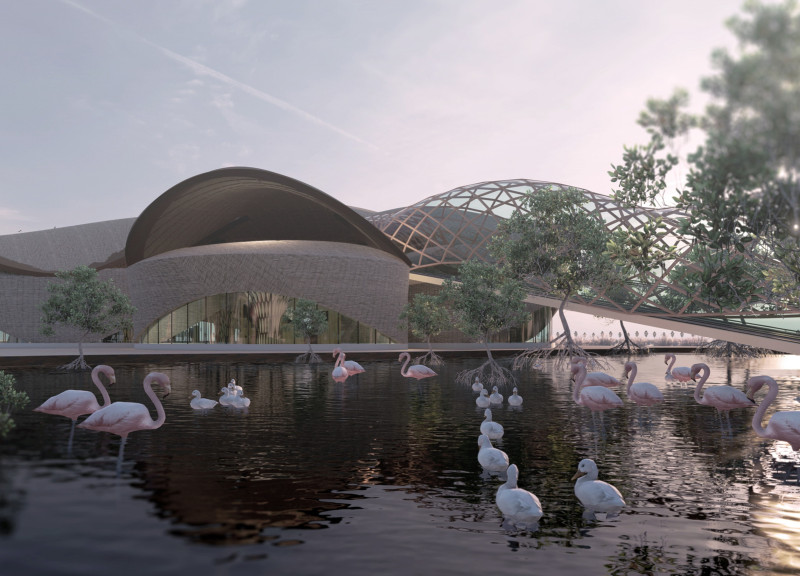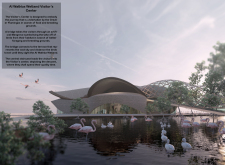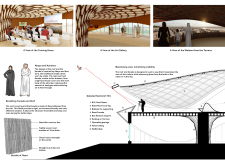5 key facts about this project
The architectural design emphasizes functionality while prioritizing environmental sustainability. The layout includes essential areas such as a reception area, display zone, café, gift shop, training rooms, and an art gallery. Each space is purposefully designed to encourage visitor interaction and maximize their understanding of the ecological significance of the wetland area.
Unique Design Approaches
One of the defining aspects of the Visitor's Center is its correlation with local culture. The design draws inspiration from the attire traditional to the region, including elements symbolic of the Abaya and Kandora, which anchors the building in the local context while promoting a sense of identity. Additionally, the incorporation of a bridge that traverses an artificial mangrove serves a dual purpose: it provides a unique perspective for bird watching and exemplifies the center’s commitment to education and conservation.
The façade is notable for its innovative use of locally sourced reed, which not only contributes to thermal performance but also enhances the aesthetic quality of the structure. The integration of high-performance glazing and prefabricated concrete shear walls ensures structural integrity while allowing for natural light and ventilation, thereby reducing reliance on artificial climate control.
Engagement with Nature
The pathway leading from the entry point to the observation areas is intentionally designed to enhance the visitor experience. It guides individuals through various educational displays, culminating in a terrace that opens up to panoramic views of the wetland landscape. Visitors are not only educated about the flora and fauna but also engaged in the architectural experience as the building itself augments their perception of the environment.
This project emphasizes the importance of ecological sensitivity in architecture. It serves as a functional space tailored for education and tourism while promoting the story of a vital ecosystem. For deeper insights, viewers are encouraged to explore the architectural plans, sections, and designs detailed in the project presentation to appreciate the refined ideas behind the architectural concept.


























